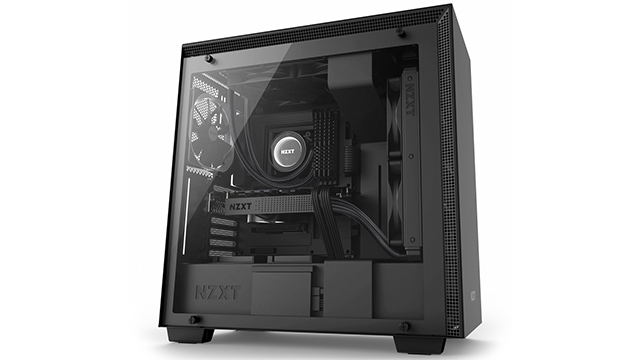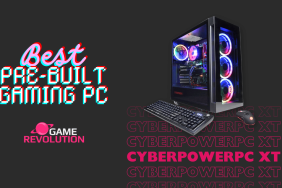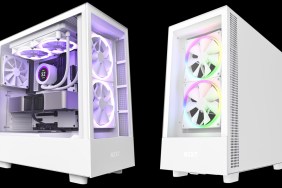The NZXT H700 case is essentially a dumbed down version of the slightly older H700i, and for many, this is actually a good thing. Following the mild controversy surrounding the H700i’s included smart device, which folks either seemed to love or hate, some critics and users pleaded with NZXT for a “dumb” version. Unlike other companies who feel they know better, stubbornly sticking to their “vision” despite overwhelming negative feedback, NZXT listened to their audience, creating the H700 PC case that I’m reviewing today. This is a product that was demanded by the PC community, with no smart device or included RGB, at a lower price point. Sounds great on paper, but what’s it really like to build in?
NZXT H700 Review – Hey, Good Lookin’!
As mentioned in the intro, the H700 does not feature the smart device included with the H700i, nor the RGB lighting. Aside from that, however, this is still the same premium case we saw before, rocking a smooth, clean look and feel on the outside, and then plenty of room to build and keep components and their cables looking tidy on the inside. The same cable management bar still sits towards the front of the case, which I’m a big fan of. It not only allows that extra bit of accent color on the more vibrant versions, but also helps to “fill” the case out for less ambitious builds. Rather than a big empty space to the right of the motherboard, you get a dash of color to entertain the eye. This is great for those who are going with an air cooling solution to begin with, before then moving on to an AIO further down the line. The cable bar fills in the gap that would otherwise be noticeably bare, maintaining a clean look without the case looking overkill. If it’s not for you, however, the bar can now be removed, should you require the extra room, or you somehow don’t like the added flair. (Shame on you!)

Of course, if you are looking to buy the H700, you are probably also looking at going with an AIO from the outset, and that’s great as radiators going up to 360 mm are supported. Both the front and top of the case boast great mounting options, which also make the H700 a great candidate for enthusiasts looking to push things even further with custom water cooling. The tempered glass side panel is a must-have these days, and the muted design of the rest of the case really helps focus attention on the internals. Less visually appealing components like hard drives and the power supply are hidden away under the power supply shroud, allowing the motherboard, CPU cooler, graphics card/s, and array of SSDs to hog the spotlight. There is a lot of potential here for RGB fanatics, though you will have to buy LED strips separately.
I/O on the top of the case includes two USB 3.0 and two USB 2.0 ports, sat next to the headphone and microphone jacks. No USB Type-C here just yet, which is a little disappointing to see, but overall there is a good range of options that will satisfy most users.
More easily spotted on the colored versions are the ventilation holes found on the edge of the case. Situated along the top and front of the H700, these tiny gaps should have a positive effect on any fans mounted there. Design-wise, they also look nice, which is obviously a big deal for a case like this!
NZXT H700 Review – Cables? What Cables?

Done right, the H700 gives you the tools you need to create a very clean look. I’ve already declared my love for the cable management bar, but I’ll happily reiterate that it does a lot to set this case apart from the competition. There is ample room for cables to pass through to the motherboard, and it’s all kept looking very tidy.
The side panel covering the rear cables is also a huge win. It pops off with the push of a button and easily clips back on. This makes it incredibly simple to access for cleaning and removing/installing parts. It’s rare that you’ll actually be using it, but this added touch helps continue the H700’s premium feel. The top of the case also lifts off with little pressure, while still feeling snug and secure when in place.
While the cable bar does most of the tidying work on the motherboard side, the rear also plays a big role in keeping the build looking clean. Pop off the back cover and you’ll see a generous selection of clear cable routes and velcro straps. Even the messiest builders going with a fully decked-out system should be able to keep things neat and tidy. While users will still need to be wary of thicker cables overlapping, as is an issue in all cable management endeavors, I have to give kudos to NZXT for making the least enjoyable part of the building process a lot less painful!
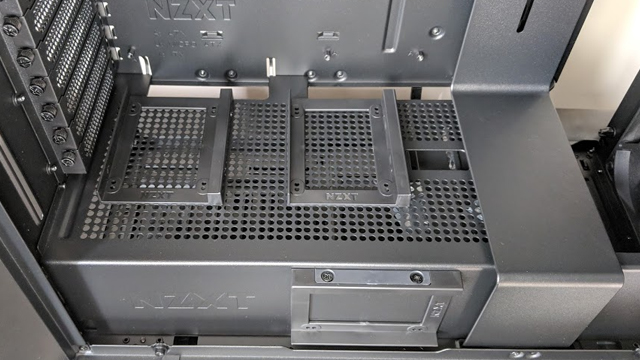
When it comes to installing storage, there are a total of five locations for SSDs. Three of these are situated atop the PSU shroud, putting that fast storage proudly on display. The other two are hidden away behind the motherboard, entirely out of sight. Also hidden from view, but this time beneath the PSU shroud, are two 3.5” drive cages, reserved for the less prestigious storage options.
There are four case cans pre-installed, consisting of three 120 mm fans in the front, and one 140 mm fan in the back. This should be plenty for all but the most cooling-obsessed among you, and it’s a nice bonus to see them all included. You can confidently install the hotter components out there without worrying about case fans being a bottleneck.
NZXT H700 Review – Dumb and Proud
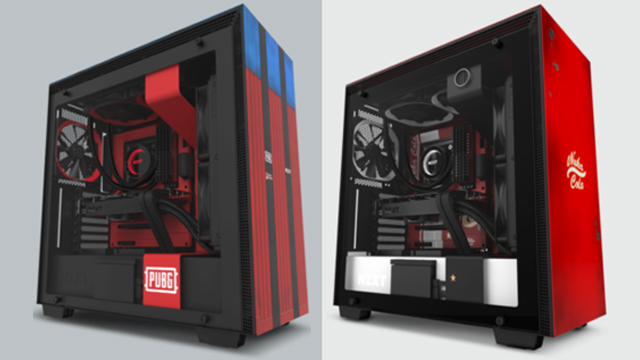
While there are a lot of premium mid-tower cases all vying for our attention, the H700 does a lot to stand out as both incredibly stylish and impressively functional. At $150, this case now sits at a competitive price point, and will be a compelling option for many enthusiast builders, or those looking for a “forever case” which they can keep for multiple hardware generations with no worries about future-proofing.
Those who are interested in the NZXT Smart Device and included RGB lights, can of course fork out the extra $50 for the H700i, but if you just want a fantastic, full-featured case without the added iffy intelligence, the non-i version is definitely worth considering. (And if you’re hoping to get that clean NZXT look without the higher price tag, then the S340 Elite is still a super solid buy.)
I’d also like to mention that the H700 isn’t the only NZXT case that had the “i” removed. Both the H400 (Micro-ATX) and H200 (Mini-ITX) are now available, offering that H700 style in a smaller package. What’s more, NZXT has also created special edition PUBG and Fallout versions of the H700, which fans of those titles will definitely appreciate.
Hopefully we see more examples of manufacturers listening closely to their community and acting quickly to make improvements. NZXT heard the feedback from buyers and reviewers of the H700i, took the criticisms on board, and pushed out this revision in rapid fashion. The H700 does enough on its own to get a recommendation from me, but it earns bonus points for NZXT’s willingness to truly listen to consumers.
H700 review unit was provided by NZXT.
